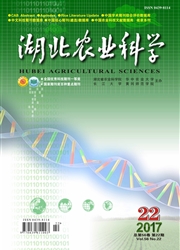

 中文摘要:
中文摘要:
水足迹方法能够真实地反映一个国家或地区各行业水资源占用情况,是当前国际水资源研究领域的热点。从水足迹理论出发,结合广西各行业用水数据,利用世界粮农组织(FAO)推荐的农作物需水量CROPWAT计算软件与CLIMWAT气象数据库,估算了2011年广西水足迹及相关评价指标。结果表明,2011年广西水足迹为754.85亿m3,人均水足迹为1 625.1 m3,水资源压力指数为55.89%,进口依赖度为12.52%,自给率为87.48%;农作物产品用水量最多,其次为动物产品,而农作物用水量中,粮食、甘蔗所占比例最大。与中国其他地区及平均水平相比,广西人均水足迹、自给率、进口依赖度高于中国平均水平。因此,应加强工业用水、农业灌溉用水效率,提高重复利用率,建议增加粮食调入量,优化本地甘蔗种植模式,发展本地粮食种植业。
 英文摘要:
英文摘要:
As a hotspot in studying the domain of water resource, water footprint (WF) can reflect the consumption of water resources in different industries. The amount of WF and its correlative indicators of Guangxi province was calculated. How to make water resources and WF be balanced and sustainable was discussed based on the theory of WF and combined with various kinds of data of different industries in Guangxi and by means of CROPWAT and CLIMWAT. The results showed that the total quantity of the WF was 754.85x10s m3. Per capita water footprint was 1 625.1 m3. The pressure index of water re- source was 55.89%. The imported dependence was 12.5% and the self-sufficiency rate was 87.5%. The amount of water com- sumed by crop products was of the most, with grain and sugarcane composing most among crop products. Per capita water footprint and self-sufficiency rate of Guangxi were above the average level of China. The water utilization efficiency should be improved. The importing amount of grain should be increased and the planting pattern of sugarcane should be optimized to develop the local grain crop farming.
 同期刊论文项目
同期刊论文项目
 同项目期刊论文
同项目期刊论文
 期刊信息
期刊信息
